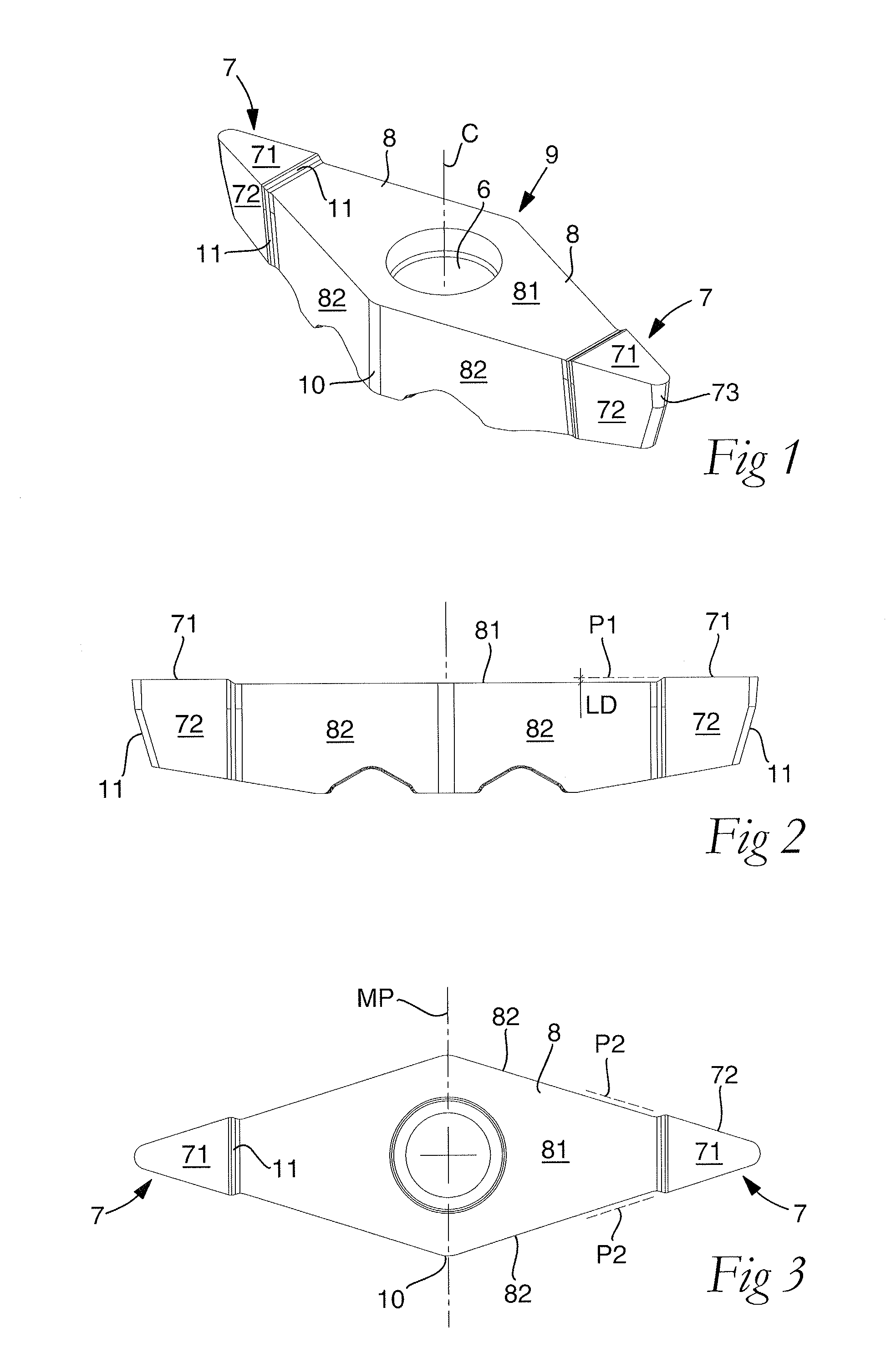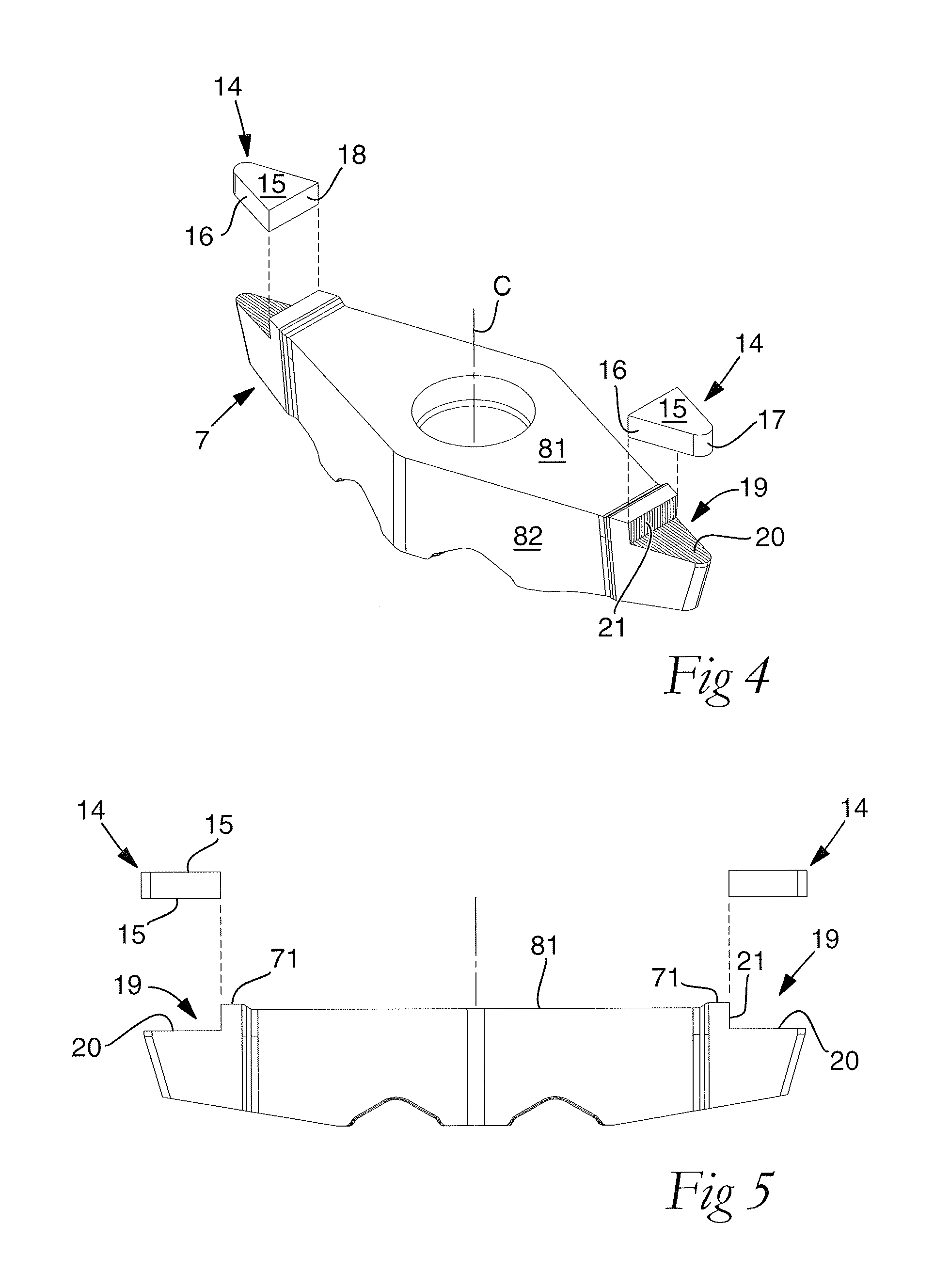Cemented carbide insert as well as a cemented carbide blank for the manufacture of such cutting inserts
a technology of cemented carbide and cutting inserts, which is applied in the direction of cutting inserts, manufacturing tools, shaping cutters, etc., can solve the problems of reducing the ability of cutting inserts to machine workpieces in a dimensionally accurate way, increasing grinding surface and grinding depth, and increasing costs
- Summary
- Abstract
- Description
- Claims
- Application Information
AI Technical Summary
Benefits of technology
Problems solved by technology
Method used
Image
Examples
Embodiment Construction
[0032]A ready for use, ground cutting insert according to an embodiment of the invention is shown in FIGS. 8 and 9. In these figures, it is seen that the cutting insert includes an upper side generally designated 1, an under side 2, and a number of side surfaces extending between the same, which will be described in more detail below. The cutting insert has a rhombic basic shape and includes two diametrically opposed cutting edges 3a, 3b, each one of which includes two main edges 4 and a secondary or nose edge 5, against which the main edges 4 converge. The main edges 4 are straight, while the nose edge 5 is rounded and has a suitable radius. The angle of convergence or the so-called nose angle may vary, but amounts to 35° in the example according to FIGS. 1-9. Between the upper and under sides 1, 2, a through hole 6 extends, the center axis C of which represents the center of the cutting insert. It should also be pointed out that the individual nose edge 5 is intersected by a bisec...
PUM
| Property | Measurement | Unit |
|---|---|---|
| nose angle | aaaaa | aaaaa |
| nose angle | aaaaa | aaaaa |
| angle | aaaaa | aaaaa |
Abstract
Description
Claims
Application Information
 Login to View More
Login to View More - R&D
- Intellectual Property
- Life Sciences
- Materials
- Tech Scout
- Unparalleled Data Quality
- Higher Quality Content
- 60% Fewer Hallucinations
Browse by: Latest US Patents, China's latest patents, Technical Efficacy Thesaurus, Application Domain, Technology Topic, Popular Technical Reports.
© 2025 PatSnap. All rights reserved.Legal|Privacy policy|Modern Slavery Act Transparency Statement|Sitemap|About US| Contact US: help@patsnap.com



